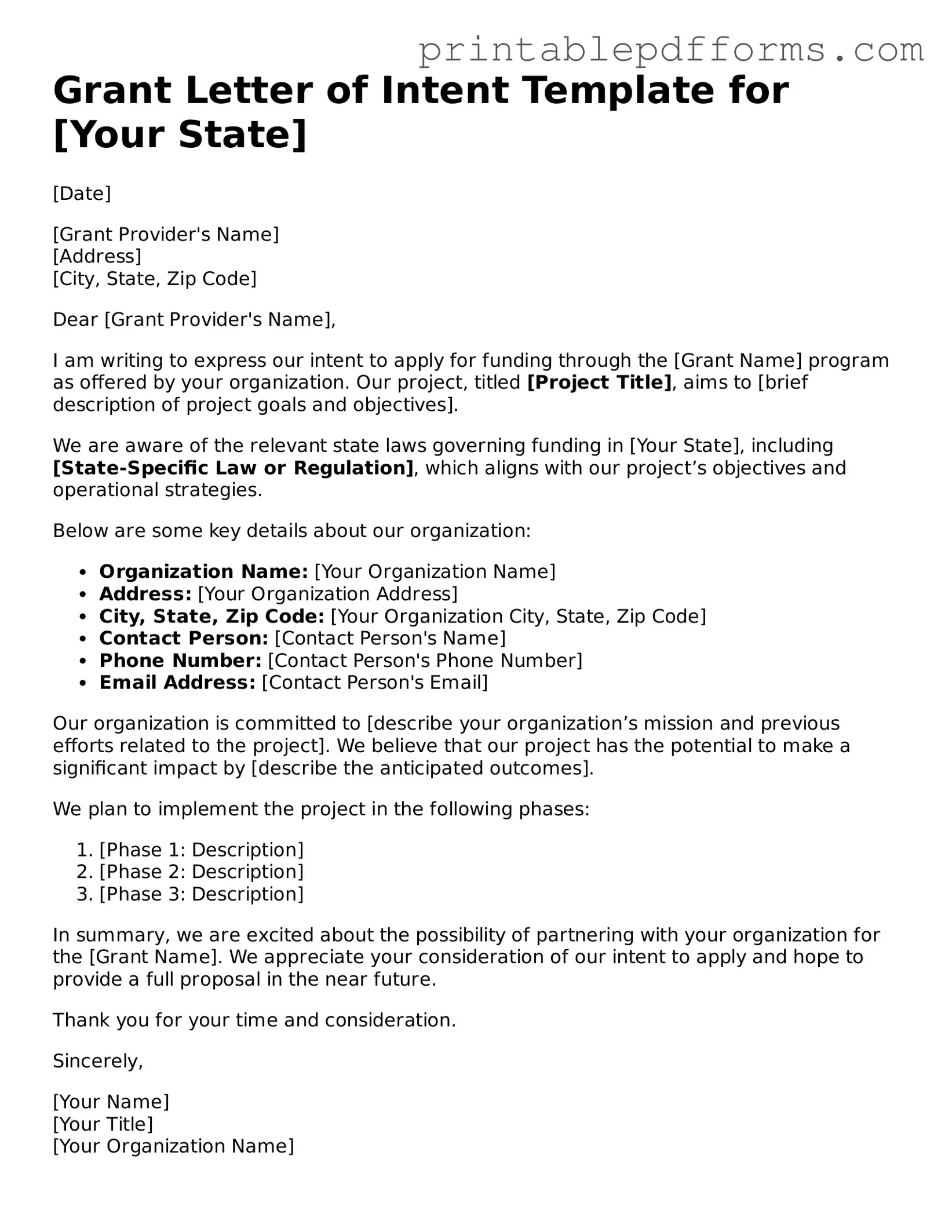Grant Letter of Intent Template for [Your State]
[Date]
[Grant Provider's Name]
[Address]
[City, State, Zip Code]
Dear [Grant Provider's Name],
I am writing to express our intent to apply for funding through the [Grant Name] program as offered by your organization. Our project, titled [Project Title], aims to [brief description of project goals and objectives].
We are aware of the relevant state laws governing funding in [Your State], including [State-Specific Law or Regulation], which aligns with our project’s objectives and operational strategies.
Below are some key details about our organization:
- Organization Name: [Your Organization Name]
- Address: [Your Organization Address]
- City, State, Zip Code: [Your Organization City, State, Zip Code]
- Contact Person: [Contact Person's Name]
- Phone Number: [Contact Person's Phone Number]
- Email Address: [Contact Person's Email]
Our organization is committed to [describe your organization’s mission and previous efforts related to the project]. We believe that our project has the potential to make a significant impact by [describe the anticipated outcomes].
We plan to implement the project in the following phases:
- [Phase 1: Description]
- [Phase 2: Description]
- [Phase 3: Description]
In summary, we are excited about the possibility of partnering with your organization for the [Grant Name]. We appreciate your consideration of our intent to apply and hope to provide a full proposal in the near future.
Thank you for your time and consideration.
Sincerely,
[Your Name]
[Your Title]
[Your Organization Name]
